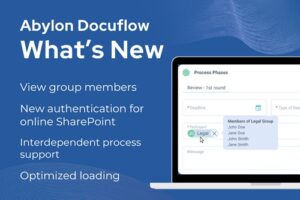
Facing the Challenges of Forecasting Software Sales

Transformations, transformations, transformations.
Forecasting software licenses can be a daunting task for many organizations. Without the right tools, the transformation and data management required will consume up to 95% of your time and resources.
This blog post will explore the challenges involved in forecasting software licenses and propose a solution to make the process more efficient and avoid doing all the required transformations manually.
The Importance of Transformation
The process of forecasting typically involves several steps, including creating reports, distributing them to planners, collecting data, verifying accuracy, consolidating data, and presenting it to upper management. This cycle often needs to be repeated whenever new or better data is required, leading to a significant amount of manual work, particularly in the transformation of data from one format to another.

The Forecast Process
- Create a report for every planner.
- Distribute the report via email or a shared space.
- Planners provide their numbers.
- Track completion.
- Collect the data.
- Verify the data.
- Correct any errors.
- Recalculate and consolidate the data.
- Present the data to upper management.
- Repeat from step 2 as necessary.
But there’s another issue here to be pointed out: Why You need instant recalculations?
The answer is pretty simple. It is hard to plan Sales and Revenues if you must plan contract items sold, and the figures aren’t instantly recalculated.
The Missing Link: Instant Recalculations
Effective planning and forecasting require instant recalculations to adjust for changes in data, particularly when dealing with complex business models.
Any solution that recalculates based on the input several steps after the input provided is considered a bad solution.
Excel, while powerful, often falls short in this regard, especially when dealing with large datasets (number of lines) and/or intricate calculations.
So, there’s a missing link in the process between the consolidated numbers and the Planner providing their numbers:

Questions you might consider include:
- What makes a software selling business model so complex?
- What transformations are needed to get accurate sales and revenue forecasts?
- Why don’t sales equal revenue?
Understanding the Complexity of Forecasting License Sales
-
- You want analytical planning
- Planners plan items/contracts sold
- But you already have contracts
- Probably some of the contracts will be renewed
- You might also adjust the price
- So, to calculate Sales and Revenue for a market, you must
- Provide new items
- Plan on contract-renewals
- … And price changes
- Apply the above 2 factors for the existing contracts, as well as for the new recurring contracts
- Provided with the above, you’ve finally got the sales figures.
However, you are still not ready, because Sales are not directly equal to Revenues due to Deferrals.
What Are Deferral Calculations?
For accurate “accounting-ready” revenue forecasting, it’s crucial to calculate deferrals. With Deferrals you correct the sales figures, to show every penny in the correct period.
For example, if a customer pays $12,000 in March 2024 for a 12-month lease, the sales amount is $12,000, but the revenue recognized in 2024 is only $10,000, with $2,000 deferred to 2025.
Also, you may have an accounting policy in place that enforces you to acknowledge an upfront percentage of your Sales as Revenues. These upfront percentages are the licence part from an SaaS recurring contract.
Manual Transformations: The Sand in the Machine
A Forecasting process that involves calculating all the above, especially with a large number of contracts and contingencies (let’s say, a couple of thousand lines) will have to involve manual transformation steps at every new data provided by the planners (aka. the businessmen).
If you want to save that time plus spare the manual efforts and the brain power, you will have to automate this process.
When you decide to automate, you must answer 2 major questions:
- Is there a product on the market, that provides a fine solution for modelling the above, and
- Can it tackle the General Challenges in Financial Planning & Forecasting, too?
Regarding the first question. Yes, there is, and we’ll be happy to show it to you! Book a Demo to check out our Template for Software Licence Forecasting!
Regarding the second question, read on.
For a deeper dive into the general challenges of financial planning and how to overcome them, check out our detailed blog post on the topic.

Author of the post:
Zsolt Kreisz - Financial Controller in the past, now BI Developer at Abylon Consulting. Linkedin Profile





